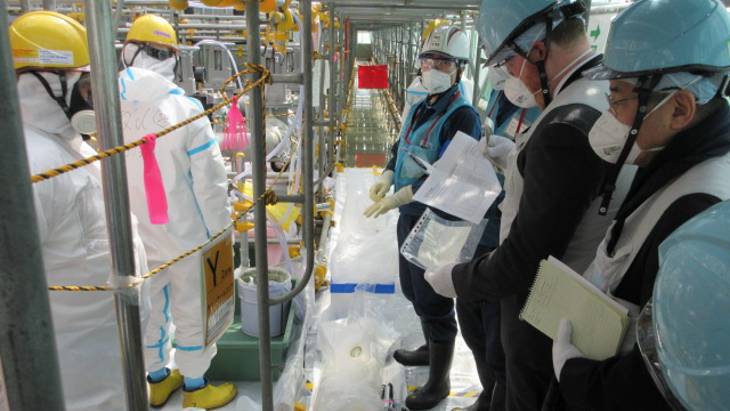The IAEA officials discussed with Japan’s Nuclear Regulatory Authority (NRA) the regulatory responsibilities, the authorisation process, preparations for environmental radiation monitoring and NRA's plans to consult with and involve the public in the regulatory process.
This was the second mission by the IAEA task force - made up of senior IAEA staff and senior external experts from 11 countries - to Japan. The first mission, in February, focused on the technical and operational plans of the operator, Tokyo Electric Power Company (Tepco) and the Ministry of Economy, Trade and Industry (METI).
"The NRA and the task force engaged in frank and wide-ranging discussions during this last week which permitted the task force to obtain a full understanding of the regulatory approach related to the technical plans of Tepco and METI for the discharge. The task force review on key regulatory aspects will benefit from this open and transparent approach," said Gustavo Caruso, a director within the IAEA Department of Nuclear Safety and Security and chairman of the task force.
Japan announced last year it planned to discharge treated water stored at the Fukushima Daiichi plant into the sea, and asked the IAEA to review its plans against IAEA safety standards which "reflect an international consensus and serve as a global reference for protecting people and the environment from the harmful effects of ionizing radiation".
IAEA Director General Rafael Mariano Grossi said the task force’s review of both the technical and regulatory aspects would result in a comprehensive safety analysis of the discharge. "The review is being carried out in an objective, credible, and science-based manner and helps to send a message of transparency and confidence to people in Japan and beyond," he said.
Task force members during this technical visit also observed Tepco’s test sampling at Fukushima Daiichi and collected some 150 litres of treated water for analysis by IAEA laboratories.
The task force will finalise and publish their report on this week’s discussions in about two months' time, the IAEA said. The report from February’s mission should be published in about a month. A comprehensive report with the task force's overall conclusions will be published before any treated water is released.
In part used to cool melted nuclear fuel at Fukushima, the water is treated and purified through a process known as the Advanced Liquid Processing System (ALPS) and has then been stored in around 1000 tanks at the site. ALPS removes most of the radioactive contamination, with the exception of tritium. The total tank storage capacity on site amounts to about 1.37 million cubic metres and all the tanks are expected to be full around mid-2022.
Japan's discharge of the water is expected to begin during the first half of 2023 but the entire operation could last for decades. In August last year, Tepco announced plans for the construction of an undersea tunnel, about one kilometre in length, for the discharge of the treated water.
Nearby countries have been alarmed by Japan's plan, but the IAEA says that the level of tritium in the water will be "well below national regulatory limits and the World Health Organisation standards for drinking water”.





_53514_33880.jpg)


_91467.jpg)





